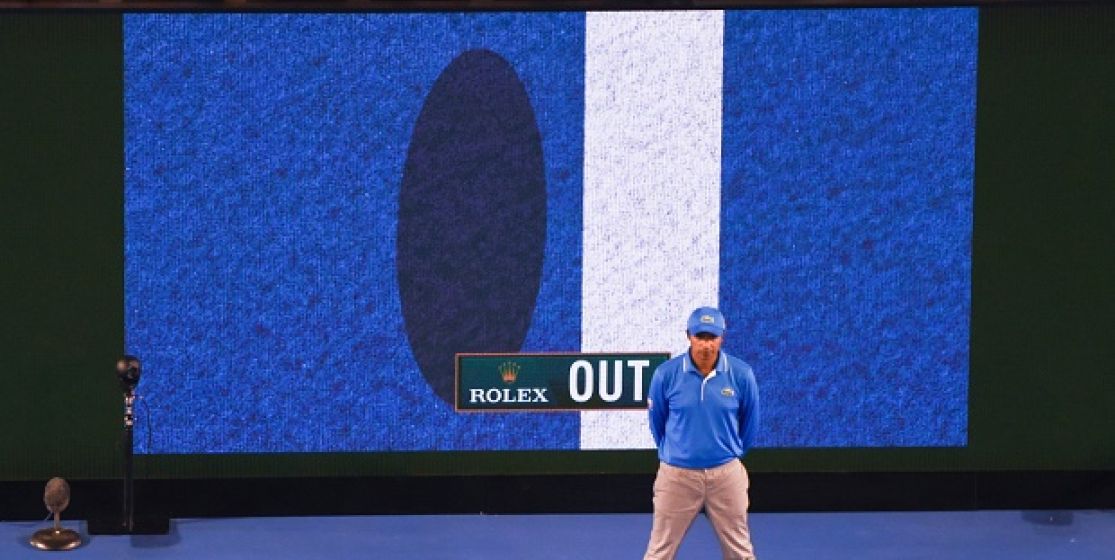It was during the 2006 edition of the Miami tournament that the Hawk-Eye was first used on the circuit. Let’s look back on how this twenty-first century technology has prove itself to be a vital tool…despite the persistent opposition.
Wednesday, March 22nd, 2006. First round of the Miami tournament in the women’s table, a 100% american match is about to enter the history books of tennis. It opposes two promising yankee players : Ashley Harkleroad and Jamea Jackson. The latter, who was given a wild-card, wins the first set, 7-5. She’s serving to start the second set when…one of her balls is called out by a service line judge. Usually, when this happens, you have to respect the decision, even if you’re skeptical about it. But that’s not the case anymore : a few weeks earlier, the organizers of the tournament were given, by the ATP and the WTA, the permission to experiment a new technology, named Hawk-Eye. So Jackson, doubting the service line judge’s decision, turns towards the chair umpire and says « challenge ». A historical first ! The court having been equipped with all the numerous cameras needed to use that new tool, it is now possible to verify if the ball is in or out. A few seconds are enough to see the trajectory of the ball virtually reproduced. Suspense…on the big screen, we see that the ball lands a few millimeters away from the line, it’s out ! The judge’s decision is approved, and the two players pick up the match from where they left it. But at the end of a tight match finally won by Jamea Jackson (7/5 6/7 7/5), she is immediately questioned on that first. « I loved it, I thought it was great, she says, walking off the court. You don't get angry. You just play and don't worry about the line calls. I wanted to be the first (to use the system), that's what it was really all about. »
TV channel first, tournaments afterwards
The Hawk-Eye system was set up five years earlier by a mathematician named Paul Hawkins. His idea is to reproduce the trajectory of an object with the triangulation of objects offered by cameras. Since the beginning, he believes this system could be very useful in sports, but cricket is his first aim. Very quickly, another sport enquires about this new tool : tennis. The governing body, known to be quite conservative, wait to see what can happen…Television channels, however, immediately see the innovation as positive for their early-21st century target audience. The British of Channel 4 are the first to use the system during their broadcast, in 2003. The system is reliable, the viewers are quickly captivated. The success is huge, and many tournaments are starting to want to use the system as well, not only to inform the spectators of a decision but during the match, to give the players more responsibility in umpiring. The ATP and the WTA are consulted, but they’ll take their time to give their consent. In fact, two years. Until December 2005, when at the Royal Albert Hall, John McEnroe is asked to test the device in an exhibition match of the senior tour. A few weeks later, the technology is authorized in the Hopman Cup, in Perth. And finally at the Miami tournament, who’s given the honor to officially introduce the technology to the world.
Safin, leader of the opposition
But at the time, the Hawk-Eye doesn’t generate general enthusiasm. Marat Safin is the leader of the opposition, and his words are very hard. « I’m totally against it, he says, it will destroy the spirit of the fame, we’ll lose fluidity. Who is the genius who came up with such a stupid idea ? » Amélie Mauresmo also criticizes its slowness, while Roger Federer believes it is a « complete waste of money » as its installation costs 100 000 dollars per court. The first months will go on to be marked by a few mistakes concerning the proper way to use the Hawk-Eye and the number of challenges awarded to each player. Each tournament decide to apply their own rules, until the governing body decide to settle on three authorized challenges (and one extra in case of a tie-break) per set and per player. Today, the Hawk-Eye is used on most tournaments, except the ones played on clay, where a mark is easily seen on the court, leading the technology to be useless. It’s also widely acclaimed amongst players, even if some of them are still not big fans of it. Among the more skeptical ones, we still find Roger Federer who, in ten years, has questioned its reliability many times. You don’t mess around with accuracy and reliability with a Swiss, do you ?






